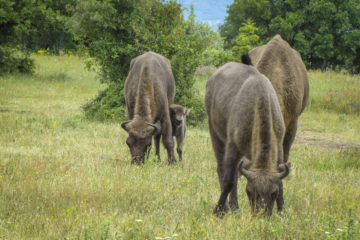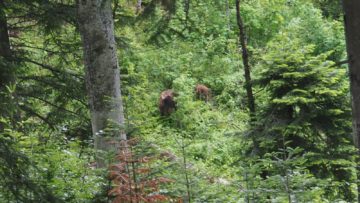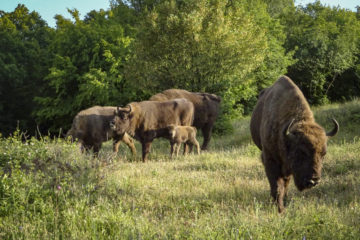Calves have just been born to bison herds in both the Southern Carpathians and Rhodope Mountains rewilding areas. Following last year’s record-breaking number of bison births in the Southern Carpathians, this shows the animals are adapting well to life in the wild.


Baby boom
Rewilding Europe and local partners are delighted to announce that bison calves have just been born to free-roaming bison herds in both the Southern Carpathians and Rhodope Mountains rewilding areas. Following the record-breaking number of calves born in the Southern Carpathians in 2019 (at least eight have now been spotted by bison rangers), the new arrivals bode well for the comeback of this keystone species, both locally and across Europe.
The bison herd in the Rhodope Mountains rewilding area was released into the wild in the summer of 2019 – this is the second calf born to the herd since their release.

In the Southern Carpathians, Rewilding Europe and WWF Romania have been working to reestablish free-roaming populations of European bison in the Țarcu Mountains for the last six years, with at least 20 calves born in the wild here since rewilding efforts began. More calves are expected in the Southern Carpathians in 2020.
Early days
Following a nine-month pregnancy, bison calves are usually born between May and July, which gives them enough time to grow and toughen up before their first winter. Bison cows are caring and attentive mothers – they typically leave the herd to give birth to ensure their calves are born into a safe and quiet environment. A bison calf follows its mother closely, especially in its first few weeks.
Bison calves have reddish fur at birth, but this begins to change to a chocolate brown after a few months, at which point they begin to moult like adult animals. Drinking milk for several months, they also begin to eat vegetation within a few weeks.
Keystone comeback

Once widespread across Europe, wild European bison were driven to extinction in the early twentieth century by hunting and habitat loss. Rewilding Europe is supporting efforts to return this magnificent animal to its ancestral lands, establishing wild bison populations in the Southern Carpathians and Rhodope Mountains and assisting with its comeback elsewhere.
As a keystone species, the rewilded bison are having an increasingly influential impact on their local environment. Through their grazing, wallowing, trampling and fertilising, burgeoning bison herds create conditions that allow a diverse range of plant and animal species to thrive. They are also an important food source for predators such as wolves, lynx and bears, and help to drive the development of nature-based tourism.
